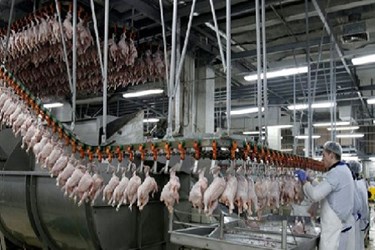Poultry Modernization Grants Unexpected Freedom
By Laurel Maloy, contributing writer, Food Online

Effective since October 20, 2014, NPIS has a retired veterinarian with the USDA’s FSIS upbeat and expecting good things
Dr. William James enjoyed a 28-year career with the U.S. Department of Agriculture’s (USDA’s) Food Safety & Inspection Service (FSIS). As the agency’s chief veterinarian he was instrumental in the supervision and implementation of a number of livestock and poultry policies, including pathogen sampling. I say this because it is refreshing to read his blogs. It is a joy to read about his seemingly unjaded outlook and his ever positive perception on all topics dealing with food safety.
His latest blog starts with an analogous story of his enjoyment of bass fishing. He describes his love for a top-of-the-water lure, a jitterbug that he used while young, abandoned in lieu of more-modern fishing baits, and most recently came to appreciate once again. Entitled Just Chillin’, he has abandoned all pretexts at using search-friendly terminology in his title, while discussing the unpopular — dare I call it a cold fish? — subject of the final ruling to modernize poultry slaughter inspection. Though I haven’t thoroughly perused all of his posts, but I have gathered from this most recent that the New Poultry Inspection System (NPIS) has been a recurring subject.
This post, however, has more to do with the new rule, rather than with the NPIS itself. Those processors not required to function under the NPIS will still be affected by many of the new rules under FSMA.
As the public meetings and non-stop communication with the FDA’s drafting and implementation of FSMA has demonstrated — this governmental agency is ready, willing, and able to listen to those in-the-know. In fact, the FDA has reached out through public meetings and extended periods of time during which the proposed rules were published, public comment was invited, and revisions were made. This has been brain-storming at marathon levels and has resulted in a give and take of ideas and solutions rarely seen between the public and the Federal Government.
However, there comes a time when we have to stop talking and start doing, and this month marks the implementation of the new rules and the NPIS. This brings James’ latest discussion on one of those changes, the matter of chilling poultry carcasses to retard the growth of pathogens. It appears that through this long and exhausting process, trust has been one of the by-products. I say this because as part of the new FSMA rule, the regulatory time and temperature requirements in regard to poultry carcass chilling have been removed. That’s not to say they don’t exist any longer, but each facility will have the freedom to develop its own chilling procedures. Chilling is still a regulatory requirement, unless the raw product is to be frozen or cooked immediately after slaughter.
Though, the means by which it is accomplished is not dictated in the regulatory language. In its stead, each facility will be required to include its chilling procedures in its Hazard Analysis and Critical Control Point (HACCP), its Sanitation Standard Operating Procedures (SSOPs) or the prerequisite program in place. A facility may choose to continue to utilize the strict parameters originally set forth by FSIS or to institute its own parameters, as long as it does the job of reducing pathogenic contamination. Facilities with a waiver from those chilling requirements that were granted under the Salmonella Initiative Program and the Salmonella Action Plan may also continue to function under those programs.
James analogy to his long-lost love, the jitterbug, draws the parallel to the reason the FSIS chilling requirements evolved to begin with. The introduction and the industry’s subsequent adoption of automated immersion chillers years ago drove the initial time and temperature guidance. The uniform requirements made enforcement much easier, but did not necessarily constitute necessary or useful constraints for all processors.
As FSMA and the NPIS move forward, a newly-engendered culture of prevention will foster creative solutions. The need to be able to process more poultry in order to feed the world’s growing population will result in what you might call the Poultry Renaissance. This freedom granted to the poultry processing community gives each facility the opportunity to be a pioneer and to more-efficiently integrate its chilling procedures into its processing methods. This is a good time for poultry processors, and for everyone who will benefit from the safer poultry entering the food processing chain. I look forward to seeing what the industry does with this new-found freedom.
